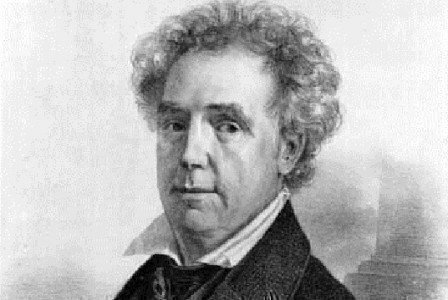In the annals of American history, only one presidential and vice presidential election was directly influenced by faithless electors. Today, it remains mostly forgotten in political lore.

Faithless electors occasionally come up as a discussion topic, especially in years with close presidential elections. In all, there have been 58 presidential elections since 1789, including the current contest featuring Donald Trump and Hillary Clinton. In these elections, there have been 23,548 electors who have taken part in the Electoral College. Only 157, of 0.67%, have voted for candidates other than the ones they pledged to represent.
Of that group of 157 faithless electors, 71 couldn’t pick their candidate in the Electoral College because the candidate had died between the popular vote and the Electoral College vote.
It’s rare for more than one faithless elector to pop up at the Electoral College. The last time there were multiple faithless electors at the national Electoral College meeting was in 1896, when four electors for the People’s Party voted for the Democratic Party vice presidential candidate, Arthur Sewell.
Ever rarer is the case of multiple electors switching their votes away from presidential candidate who was still alive. It has happened twice in 57 elections; in 1808, eight electors refused to vote for their pledged presidential candidate, James Madison. And in 1832, two National Republican Party members abstained from voting for their candidate, Henry Clay.
And then there is Richard Mentor Johnson, the only candidate in Electoral College history who saw a mass defection of electors push his race out of the Electoral College and into Congress to decide.
Johnson was on the Democratic ticket of 1836 as the vice presidential candidate for Martin Van Buren, the heir apparent to President Andrew Jackson. Johnson, a Congressman from Kentucky, was picked to balance the ticket as a partner for the New York-born Van Buren. But the Virginia delegation at the party convention in Baltimore refused to vote for Johnson as the vice presidential nominee. It rose to object after Johnson’s nomination announcement, stating he couldn’t be recommended to state voters and accusing Johnson of supporting the Bank of the United States.
The vice presidential candidate was best-known nationally for claims made by his supporters that Johnson had personally killed the Indian leader Tecumseh during the Battle of Thames in 1813. It was also well-known in political and social circles that Johnson has inherited from his father a slave, Julia Chinn, who was an octoroon. Chinn became Johnson’s common-law wife, since the couple couldn’t marry under miscegenation laws in effect, and they had two children before Chinn died in 1833. Johnson then had two other relationships with womenwho were black or mixed race, and his personal life had been a campaign issue in several prior elections.
In the 1836 presidential election, Van Buren won the general election with 170 electoral votes, defeating William Henry Harrison and three other Whig candidates. But during the Electoral College proceedings, 23 electors in Virginia pledged to Johnson voted for another Democratic vice presidential candidate, William Smith of Alabama. The news became public in mid-December, leading to more speculation about Johnson.
On February 8, 1837, the Senate convened under the terms of the 12th Amendment under the following provision: “The person having the greatest number of votes as Vice-President, shall be the Vice-President, if such number be a majority of the whole number of Electors appointed, and if no person have a majority, then from the two highest numbers on the list, the Senate shall choose the Vice-President.”
The candidates in the Senate contingent election for Vice President were Johnson, and Harrison’s running mate, Frances Granger of New York. Johnson won the contingent vote, 33-17, on party lines, and became the ninth Vice President.
Johnson’s four years as Vice President were marked by an unusually high number of tie-breaking votes required in his role as president of the Senate. But Johnson also frequently went home to manage his tavern in Kentucky.
Van Buren decided to run for re-election in 1840 with no vice presidential running mate after his experience with Johnson. But Johnson campaigned for re-election on his own and received 48 electoral votes for Vice President, compared with Van Buren’s 60. Harrison and John Tyler received 234 electoral votes to win the election easily.
After leaving Washington, Johnson spent a decade trying to continue his political career, until he died at the age of 70 in Kentucky in 1850.
As a footnote, there was a similar vice presidential faithless elector dispute four years before the Johnson situation. After the 1832 general election, 30 electors from Pennsylvania pledged to Van Buren, Andrew Jackson's running mate, voted for William Wilkins, a favorite-son candidate.
Scott Bomboy is the editor in chief of the National Constitution Center.






